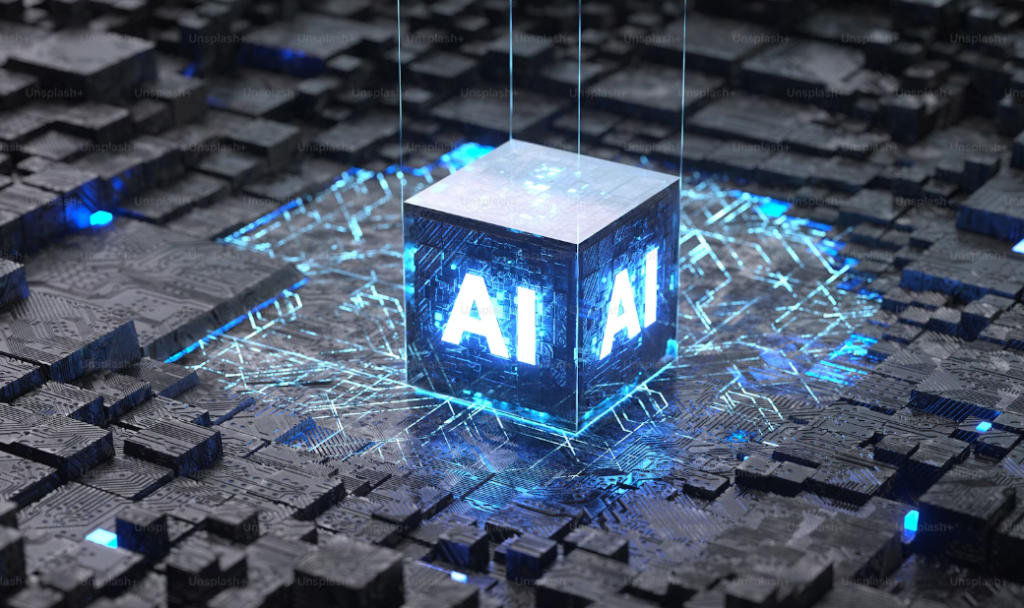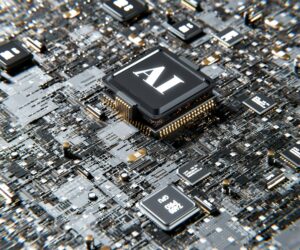The potential for artificial intelligence (“AI”) seems boundless. Businesses understandably do not want to be left out of the next big technological revolution. But, when is it really advisable to use AI? And, if so, what kind of model or models would best fit your business’ needs? This article is the first part of a multi-part series addressing high-level questions that would be helpful to ask when considering the use of AI in your business. In this article we look at the most popular form of “AI” today: supervised machine learning. In subsequent articles, we will examine the two other kinds of AI currently in vogue: unsupervised machine learning and reinforcement learning.
The basic architecture of supervised models
Machine learning (“ML”) takes its inspiration from the way neurons in the brain communicate. There are different sorts of neurons in the brain, but the most common is the multipolar neuron, which both receives and transmits signals to other neurons. Signals are received through what are called dendrites—branching structures on one end of the neuron’s cell body. These signals combine to excite the neuron’s cell body. Once the cell body reaches a certain threshold of excitation, an electrical signal is sent down a long tail on the other end of the cell body called its axon, which culminates in a release of chemicals (neurotransmitters) through the neuron’s axon terminals that excite the other neurons to which it is connected.

The underlying architecture of a machine learning algorithm (a “neural network” or “neural net”) is a greatly simplified and abstracted version of this picture. The neural network consists of a set of nodes (corresponding to cell bodies) and connections (corresponding to dendrites and axon terminals) stacked in two or more layers. Like a neuron, each node is a simple processing unit. It receives a number of input signals and processes those signals in order to output a signal of its own that is then propagated to all of the other nodes in the next layer to which it is connected. The nodes in the first layer of the neural network take inputs directly from outside, while the rest of the nodes, in what are called the network’s “hidden” layers, take their inputs from other nodes. The last layer of these nodes gives the output of the network as a whole.1

The output of the AI model is the result of the combined individual behaviors of all of the nodes in the network. The behavior of each individual node is determined by a formula called an activation function that converts all of the inputs of the node into an output. That formula takes into account the relative strength of the connections between nodes, which can be thought of as “weights” for the input received by each node from all of the other nodes to which it is connected. Typically, an AI model will have many more nodes and hidden layers than the simple network displayed above. Neural networks with two or more hidden layers are called deep neural networks (“DNNs”). There are also more sophisticated data processing techniques and architectures that can be used to enhance performance in what are called convolutional neural networks (“CNNs”) and recurrent neural networks (“RNNs”). For the purposes of this article, however, understanding the basic idea behind the simple neural network above is enough.
What do supervised models do?
In essence, supervised models can be thought of as providing statistically-based inferences or predictions. Simply stated, given an input, the model is tasked with providing the right output. For example, you give the model a bunch of images of cats and dogs. Its job is then to learn how to classify these images. Each time the input is a picture of a cat, it should output the label ‘cat’. Each time the input is a picture of a dog, it should output the label ‘dog’. Or, perhaps you give the model information about the location, square footage, number of rooms, etc., of a given house. The model is then charged with providing the price of the house. Yet another example, relevant to finance, is the use of a supervised model to predict a stock’s next day return on the basis of its prior returns.
In each of these cases, the model can be thought of as generating inferences or predictions about what the right answer will be, given the input. Classification (as with the pictures of cats and dogs) and regression (as with the housing prices and stock returns) are two of the most common uses for supervised models.

The supervised model learns by being trained to recognize relevant features in the input data that statistically correlate with the right output. At a high level of description, the training stage involves presenting the model with a series of inputs and checking its outputs against the desired outputs. If there is an error in the output, then the weights between the connections of the network are systematically tweaked to bring it closer to the desired output.2 The input and output data for the training set are labeled to enable the model to learn, making the learning supervised.
The hope is that, after training, the model can then generalize beyond the training data to new inputs it has never seen before. Typically, this training requires a large set of samples and multiple training cycles to work, which is one of the reasons why AI can be so costly.
Recognizing what ML models are doing at a fundamental level helps avoid using the wrong type of model for the task at hand. For example, suppose one is in the business of finding oil reservoirs. In this case, a classifier somewhat like the one described above might be best for one’s purposes. Perhaps one feeds the model a geological dataset and it outputs a prediction for the location of an oil reservoir. Here, ChatGPT would be ill-suited to the task. The data for ChatGPT is a linguistic corpus. ChatGPT is optimized to provide linguistic output solely on the basis of statistical patterns in that linguistic corpus. Hence, if the information is not already latent in the linguistic corpus, that information will not find its way into the output. The output will be worthless.
What does success look like?
The above considerations raise a crucial question when considering the use of AI in your business: what does success look like? There is a notable push to inject AI into business operations regardless of whether it will actually help. However, the use of AI at scale will be considerably costly, so it is important to know what things would look like if it were successful for your purposes. Without a well-specified goal, the AI system could perform beautifully, and yet at the same time be a net drain on operations.
A way to rephrase that question for supervised models is the following: Supervised machine learning, at its core, involves learning a particular relationship between inputs and outputs. So, what relationship is the model learning? How will the training data be acquired and how will it be labeled? How will the output fit into operations in such a way that it furthers a particular goal or set of goals in a cost-effective manner? Even if your company opts for an off-the-shelf model, it is important to know the answers to these questions. Specifying success criteria at this level makes it more likely that the AI model will be used effectively.
Replacing or augmenting human performance?
The intelligent use of AI also requires answering the difficult question of whether it is better to replace or to augment human performance with AI. Replacing human employees with AI may look to be a cost-saving measure at first, but again, one should ask oneself what sort of task the human agent is performing. If it requires a contextually-sensitive appraisal of facts and possibilities for action, a degree of creativity or problem solving that cannot be addressed by learning solutions from a large number of cases, then replacement with AI of the supervised sort will likely result in a degradation of output quality.
In such cases, it may be better to enlist AI to perform certain well-defined sub-tasks. These sub-tasks could involve, for example, trawling through databases for key terms or dates. This sort of AI augmentation would enable employees to focus their creative energies on more productive, higher-level goals. Indeed, one of the key advantages of AI is its ability to find hidden patterns and relations in voluminous amounts of data. One of the key advantages of the human agent is his or her ability to act in a goal-oriented and creative manner. Bringing the two together in meaningful ways is often more likely to have a beneficial effect, especially when the tasks at hand are complex and the goals are spread out over time.
Conclusion
Naturally, there is much more to determining whether AI is right for your case, and if so, how to properly deploy it. As a start, however, the intelligent use of AI requires concretely visualizing how the AI system will enter your business’ overall flow of operations. In the case of supervised learning models, this can be helpfully cast in terms of what relationship between inputs and outputs the AI model in question is learning. Once this is established, it becomes easier to see whether the input data is reasonably acquirable and whether the output will be useful. Supervised learning models are ultimately in the business of making statistically-based predictions. Knowing the general trends of those predictions, their accuracy and their sources of data will go a long way towards heading off wasteful deployment.
At HM, our team specializing in AI consulting can help you find the right combination of AI and human involvement that will best meet your needs. Please do not hesitate to reach out for more information on how we can assist you today in growing your enterprise with the help of AI.
For further information on this article, contact:
Alexander Webb | Senior Consultant | [email protected]
Disclaimer: The material in this post represents general information only and should not be relied upon as legal advice. Holland & Marie Pte. Ltd. is not a law firm and may not act as an advocate or solicitor for purposes of the Singapore Legal Profession Act.
[1] Any layer between the first layer and the last layer of a neural network is called a “hidden layer”.
[2] The usual method of “tweaking” is called backpropagation. The interested reader can learn more about backpropagation here.





